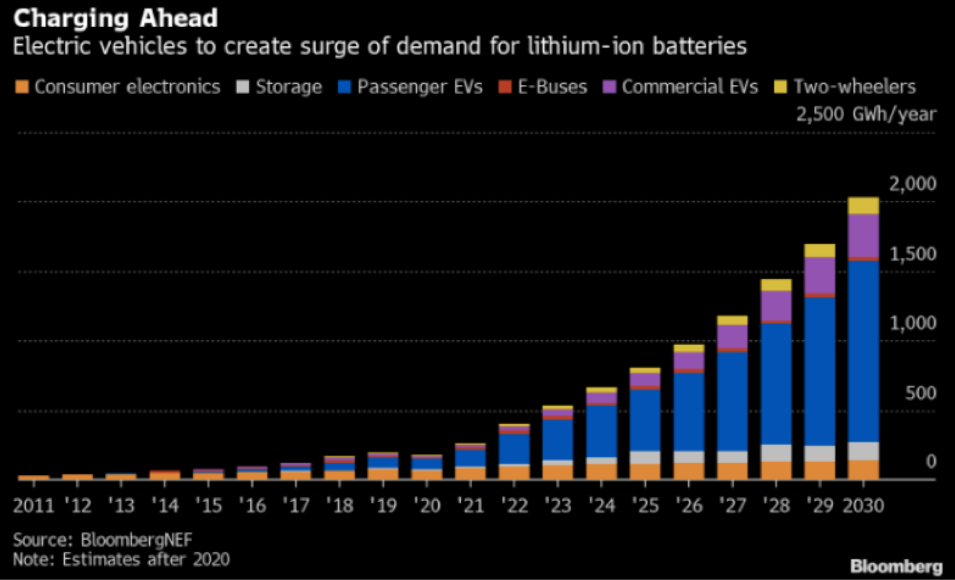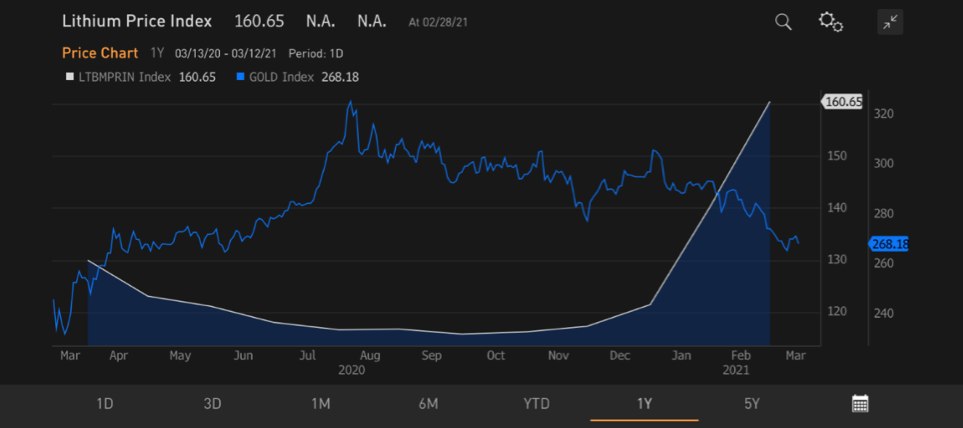The race to achieve net-zero emissions presents a challenge and opportunity for the circular economy, which applies regenerative design thinking to economics and aims for sustainability.
To reach net-zero greenhouse gas (GHG) emissions by 2050, big shifts are underway. While alleviating climate change is paramount, transitioning to a low- or no-carbon economy may include activities with other potentially negative impacts if not adequately managed.
For example, with transportation accounting for 15% in global GHG emissions at the end of 2019, adopting battery-powered electric vehicles (EVs) will help achieve climate objectives. EV sales increased by 54% year-over-year in 2020 despite the COVID-19 pandemic, and demand for lithium-ion batteries is expected to grow 1030% by 2030, as per Bloomberg estimates. This isn’t surprising given existing and upcoming regulations across different regions, such as China’s 13th Five- Year Plan and the emissions reduction schemes of California and the European Union.

 Source: Bloomberg Finance LP, as of March 13, 2021
Source: Bloomberg Finance LP, as of March 13, 2021
However, investors in battery manufacturers and car makers, as well as direct investors in renewable projects, should consider the environmental and social impacts of lithium to ensure companies in their value chain address these challenges sufficiently.
Lithium production, water consumption and contamination
One car battery requires 6,000 gallons of water. The South American triangle which covers parts of Argentina, Bolivia and Chile holds more than half of the world’s lithium supply. South America is also one of the Earth’s drier places. In Chile’s Salar de Atacama, mining activities consume 65% of the region’s water, compromising the water requirements of farmers and other activities.[1] This could cause community opposition and companies can lose their operating license.
Lithium extraction also uses harmful chemicals. According to the International Chemical Secretariat, lithium mining produces 17 chemicals, including brominated flame retardants [2]; these are cited on the list of hazardous chemicals, raising the possibility of restricting their usage. These chemicals harm aquatic life and water quality, affecting communities and their water supplies as they cause air and soil pollution.
The emission intensities of nitrogen oxide (NOx) and sulfur oxide (SOx) of the specialty chemicals company Albemarle, for example, are significantly higher than other specialty chemical companies in the MSCI ACWI index.[2] Companies can incur liabilities if they don’t manage contamination risk.
In addition, if not properly recycled, rechargeable batteries create environmental damage. Once in the landfill, these substances contaminate groundwater, soil and air.
Recycling opportunities
With strong tailwinds in battery demand and contamination risks, recycling offers an opportunity. Reports indicate the market for battery recycling will reach $137 million by 2027 in North America. Most of the current recycling occurs in the consumer sector; however, given the electrification trends in numerous sectors, this growth number can be higher.
GHG emissions of EVs
From mining and transportation to battery manufacturing, shipping and car manufacturing, EVs have their own carbon footprint. Many companies are working with their suppliers to reduce Scope 3* emissions by adopting renewable energy in their operations. Scope 3 emissions constitute over 90% of the GHG inventory of an automotive equipment manufacturer. However, progress on Scope 3 emissions remains preliminary.
A circular economy approach
Shareholders, direct investors and creditors of companies involved in the EV supply chain can help adopt a circular economy approach to sustainability by taking into account these considerations:
Public market investors (shareholders and creditors):
- Establish best practices in lithium supply chains through ESG analysis of operating companies.
- Encourage research and development to spur innovations in reusing, recycling and disposal.
- Adopt best practices in product stewardship programs and plans to phase out hazardous chemicals.
- Encourage target setting for reducing harmful emissions. Key metrics to track can include GHG, NOx, Sox emissions and other effluents.
- Understand the political and governance risks of the regions battery minerals are sourced from.
- Integrate companies’ ESG performance into investment analysis and financial models (through a discount rate for ESG laggards to account for potential higher operational costs or litigation costs caused by negative environmental and community impacts).
- Engage with companies to better understand their practices, targets, performance metrics, plans about minimizing environmental and social impacts, and research and development plans about sustainable technologies.
Direct/real asset investors:
- Integrate ESG factors into project planning and development – e.g. initial impact assessments as well as free and prior informed consent.
- Conduct regular environmental and social impact assessments, including effects on biodiversity and community resources.
- Establish operational best practices and performance reporting on sector-relevant ESG issues, such as waste management, air emissions, health and safety practices and performance, ESG accountabilities in executive compensation, and skills diversity at board level.
- Understand ESG risks in their supply chains.
By engaging with companies on issues and metrics that ensure a holistic view of their ESG performance, investors can help mitigate ESG bubbles created by specific themes and facilitate a just transition towards a net-zero economy.
Sources:
[1] Juan Ignacio Guzmán, Patricio Faúndez, José Joaquín Jara, Candelaria Retamal (2021), Role of Lithium mining on the water stress of the Salar De Atacama Basin.
[2] MSCI ESG Ratings report for Albemarle Corporation as of March, 2021
* Scope 1: Company direct emissions
Scope 2: Emissions from energy purchased by the company
Scope 3: Emissions throughout supply chain and final use of product/services

